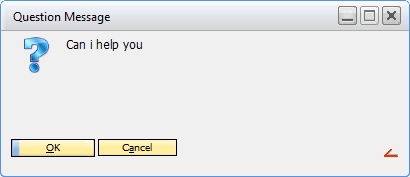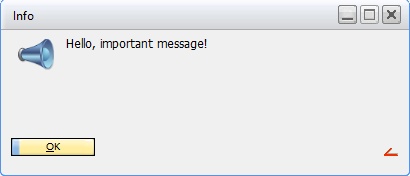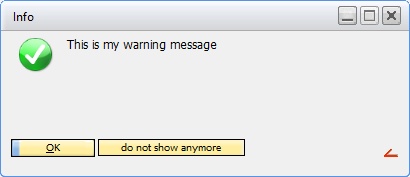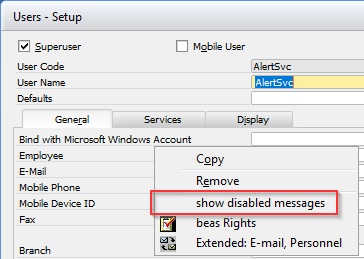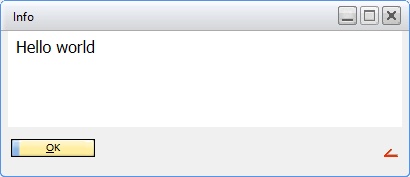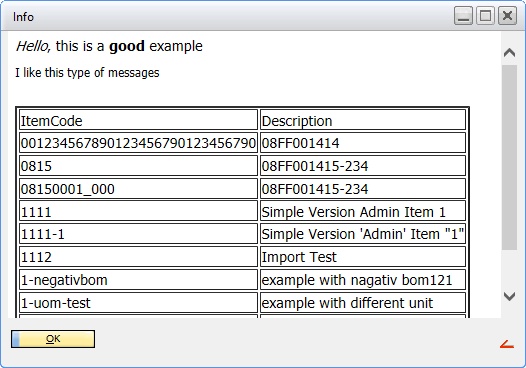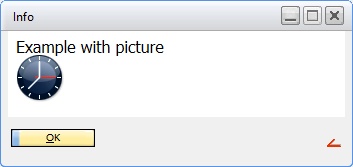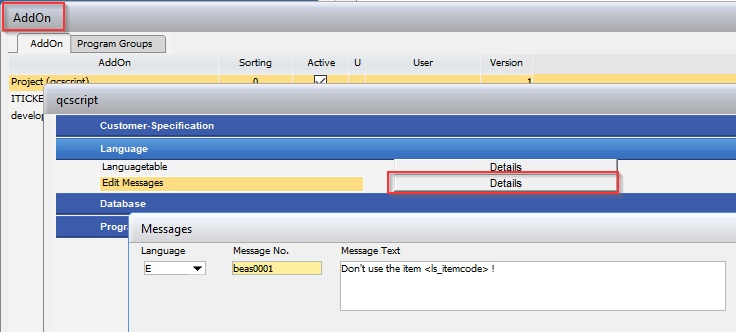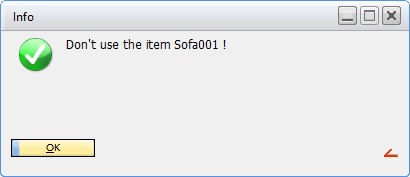messagebox
![]()
Displays a message box or message in the foot line.
messagebox=<typ>$$<text>
Error message in Tool bar |
BeasScript: messagebox=error$$Hello World
|
Info message in Tool bar |
BeasScript: messagebox=info$$Hello World
|
Ok message in Tool bar |
BeasScript: messagebox=ok$$Hello World
|
OK message |
BeasScript: messagebox=ok$ok
|
Simple popup message |
BeasScript: messagebox=hello world
|
Messagebox with Placeholder |
BeasScript: string ls_name ls_name=James Bond messagebox=Hello <ls_name> Today is <today,dddd dd mmmm yyyy>, <now,hh:mm am/pm>
|
Question |
Simple Variant: use command question BeasScript: question=Is this correct?=yesfunction()=nofunction() function yesfunction messagebox=Thank you end function function nofunction messagebox=Sorry. Next time i'll be better end function
|
Extended message box
In follow variant you can create a complex messagebox
Beas Script
messagebox=<typ>$popup=true<tab><parameter><tab><parameter><tab> ....
messagebox({"popup"=true,"parameter"="...","parameter"="..."})
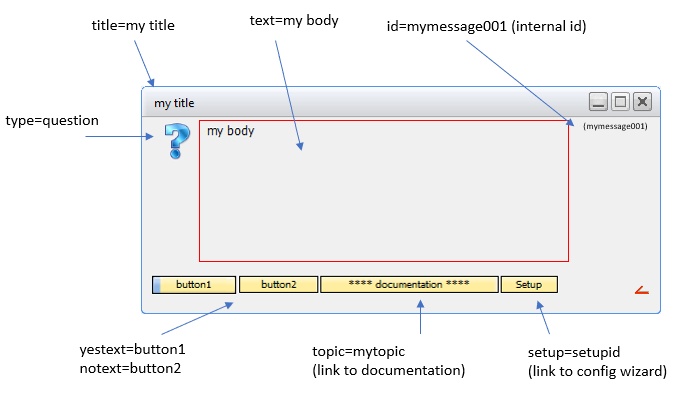
You have many properties. Use the Script assistant to generate the source code
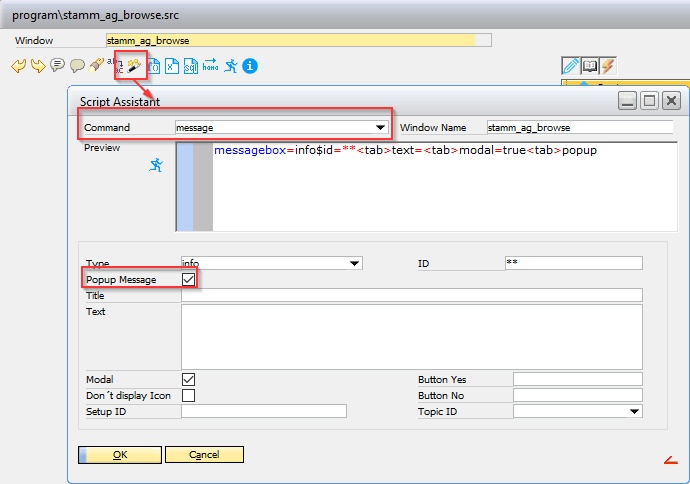
The following properties are available:
|
if keyword "<html>" or "<body> inside the message text, Beas displays the text in an internet explorer window if you don't define <body>, Beas will use HTML Standard format.
Note: Don't use escape signs in the Text.
messagebox=info$popup=true<tab>text=<body>Hello world</body>
You can use every HTML style and create HTML tables.
// Define First line of HTML ad variable htmltext // with #define we don't need the & sign for define next row. // it's simple to define in this way #define htmltext
Escape signs The system converts escape signs automatically! Correct: text=Hello "World". Result: Hello "World" Wrong: text=Hello /"World/". Result: Hello /"World/"
If you want to display a HTML 1:1 with escape signs you can open the used window directly: openchild=system_message.psr<tab>as_typ=info<tab>modal=true<tab>as_content=<body>Hello /"World/"</body>
Working with pictures
In the Background we don't have a WEB Server. Everything is file-based. We always need the full path from the local system or the complete network path.
Attribute to display pictures <img src="pic_trulli.jpg">
setvar=htmltext=& Example with picture<br/>& <img src="<system.homefolder>bmp\gfx\big_time.png">
messagebox=info$popup=true<tab>text=<body><htmltext></body>
|
With the message id you can define every message as unique id In translation system you can define the translation per language and id
Standard messages: in file [homefolder]\program\language_e.src you can find the complete translation table in area "M:[id]" you can see the message id's and on right side the Text
Example: M:feinb1 = Item <art_id> does not exist! string art_id
But for better reading of source code messagebox=info$feinb1$Item <art_id> does not exist
Own translation
For multi-language customization, you can define your own translation table. AddOn Administration (Beas) > Edit > Language > Edit Message > Define Language, Message No and Message text
Now you can use it
string ls_itemcode ls_itemcode=Sofa001 messagebox=info$id=beas0001<tab>popup<tab>text=Verwende nicht den Artikel <ls_itemcode>
or as simple variant - in bottom line
messagebox=info$beas0001$Verwende nicht den Artikel <ls_itemcode>
|
with (properties) after message type you can define additional log entries
message=error(propertie,propertie2)$messageid$message
Example: messagebox=error(shortprotocol)$$This is my next with copy in shortprotocol
|




